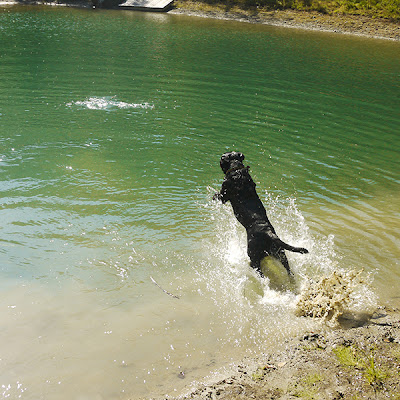Why do some of us develop cruciate problems and others of us don't? Injuries to the ligament can occur at any time. My dad says the number one injury he sees is when a dog suddenly leaps off a porch after a squirrel (or into a pond after a stick), falling a distance, or slipping in a hole or on slippery ground. The other really big reason is the ligament slowly degenerates over time. The cause of this is still unknown, conformation (the shape and length of the bone structure) and genetics (you get this from your parents and their parents and so on) seem to play roles in cruciate failure. We definitely see some breeds more then others. The Labrador Retriever is a very common patient at Small Animal Veterinary Emergency Services with anterior cruciate ligament (ACL) injury. We also see many Golden Retrievers, Rottweilers, Bichon Frise, Newfoundlands, and German Shepherds.
The ACL is a supporting structure that connects the back of the femur (the large bone above the knee) to the front of the tibia (the large bone beneath the knee). It works hand and hand with another ligament called the posterior cruciate ligament controlling the back-to-front motion of the knee. The ligaments keep the bones in-line, while also stabilizing the knee. The slope of the front of the tibia (plateau) varies in dogs (genetics) and the greater the slope the more pressure is placed on the ACL ligament. Obesity also plays a role in that the more weight downward (my brother taught me that gravity is always pulling us down), the more stress on the leg joints and thus increasing the risk of straining or rupturing this ligament.
So how do you know your dog is suffering from an ACL injury? Your dog may show a hint of lameness after exercise in one rear leg all the way up to "three-legged" (unable to place any weight on the leg) lameness. The lameness may come and go, especially after exercise. Sometimes there will be actual swelling inside the leg by the knee. It is important to remember that we dogs are stoic, we only show pain or suffering when we can't hide it any longer. Watch for hidden signs, a happy dog turns grumpy or an energetic dog suddenly not excited about chasing a ball. Perceived back pain or other suspected pains may actually be knee pain.
Tata for now




